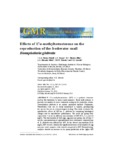Use este identificador para citar ou linkar para este item:
http://www.alice.cnptia.embrapa.br/alice/handle/doc/1002535Registro completo de metadados
| Campo DC | Valor | Idioma |
|---|---|---|
| dc.contributor.author | RIVERO-WENDT, C. L. G. | pt_BR |
| dc.contributor.author | BORGES, A. C. | pt_BR |
| dc.contributor.author | OLIVEIRA FILHO, E. C. de | pt_BR |
| dc.contributor.author | MIRANDA-VILELA, A. L. | pt_BR |
| dc.contributor.author | FERREIRA, M. F. N. | pt_BR |
| dc.contributor.author | GRISOLIA, C. K. | pt_BR |
| dc.date.accessioned | 2014-12-15T11:11:11Z | pt_BR |
| dc.date.available | 2014-12-15T11:11:11Z | pt_BR |
| dc.date.created | 2014-12-15 | pt_BR |
| dc.date.issued | 2014 | pt_BR |
| dc.identifier.citation | Genetics and Molecular Research, v. 13, n. 1, p. 605-615, 2014. | pt_BR |
| dc.identifier.issn | 1676-5680 | pt_BR |
| dc.identifier.uri | http://www.alice.cnptia.embrapa.br/alice/handle/doc/1002535 | pt_BR |
| dc.description | 17-α-methyltestosterone (MT) is a synthetic hormone used in fish hatcheries to induce male monosex. Snails hold promise as possible test models to assess chemicals acting on the endocrine system. Biomphalaria glabrata is an aquatic gastropod mollusk (Pulmonata, Planorbidae) that can be easily maintained in aquaria, predisposing the species for use in ecotoxicological testing. This study evaluated the reproductive effects of MT on B. glabrata by examining histological changes and its reproductive performance. Ten snails per group were exposed for 4 weeks to different concentrations of MT (0.01, 0.1, and 1.0 mg/L). The total number of laid eggs, egg mass per group, size of type V oocytes, and production of spermatozoids were determined. Reproduction of B. glabrata was affected by MT. At the lowest concentration (0.01 mg/L), MT caused a statistically significant increase in the number of egg mass per snail compared with controls unexposed to MT. Histopathology analyses showed an increase in the sperm production at the higher MT concentrations of 0.1 and 1.0 mg/L. Chromatographic analyses of water samples showed that MT concentrations rapidly declined within a 96-h period. These results highlight the importance of giving more support to regulatory authorities, since MT is not registered for use on fish hatcheries in many countries around the world. Wastewater from fish farms discharged into aquatic ecosystems should be monitored for MT residues, since its presence could compromise the reproduction of other native snail species. | pt_BR |
| dc.language.iso | eng | eng |
| dc.rights | openAccess | eng |
| dc.subject | Hormônio sintético | pt_BR |
| dc.subject | Performance reprodutiva | pt_BR |
| dc.subject | Desreguladores endócrinos | pt_BR |
| dc.title | Effects of 17α-methyltestosterone on the reproduction of the freshwater snail Biomphalaria glabrata. | pt_BR |
| dc.type | Artigo de periódico | pt_BR |
| dc.date.updated | 2014-12-15T11:11:11Z | pt_BR |
| dc.subject.thesagro | Histopatologia | pt_BR |
| dc.subject.thesagro | Biomphalaria Glabrata | pt_BR |
| dc.subject.nalthesaurus | Methyltestosterone | pt_BR |
| dc.subject.nalthesaurus | Reproductive performance | pt_BR |
| dc.subject.nalthesaurus | Endocrine-disrupting chemicals | pt_BR |
| dc.subject.nalthesaurus | Histopathology | pt_BR |
| dc.subject.nalthesaurus | Synthetic hormones | pt_BR |
| riaa.ainfo.id | 1002535 | pt_BR |
| riaa.ainfo.lastupdate | 2014-12-15 | pt_BR |
| dc.identifier.doi | http://dx.doi.org/10.4238/2014.January.28.6 | pt_BR |
| dc.contributor.institution | UNB; UNB; EDUARDO CYRINO DE OLIVEIRA FILHO, CPAC; UNB; UNB; UNB. | pt_BR |
| Aparece nas coleções: | Artigo em periódico indexado (CPAC)  | |
Arquivos associados a este item:
| Arquivo | Descrição | Tamanho | Formato | |
|---|---|---|---|---|
| 34253.pdf | 1,02 MB | Adobe PDF |  Visualizar/Abrir |









